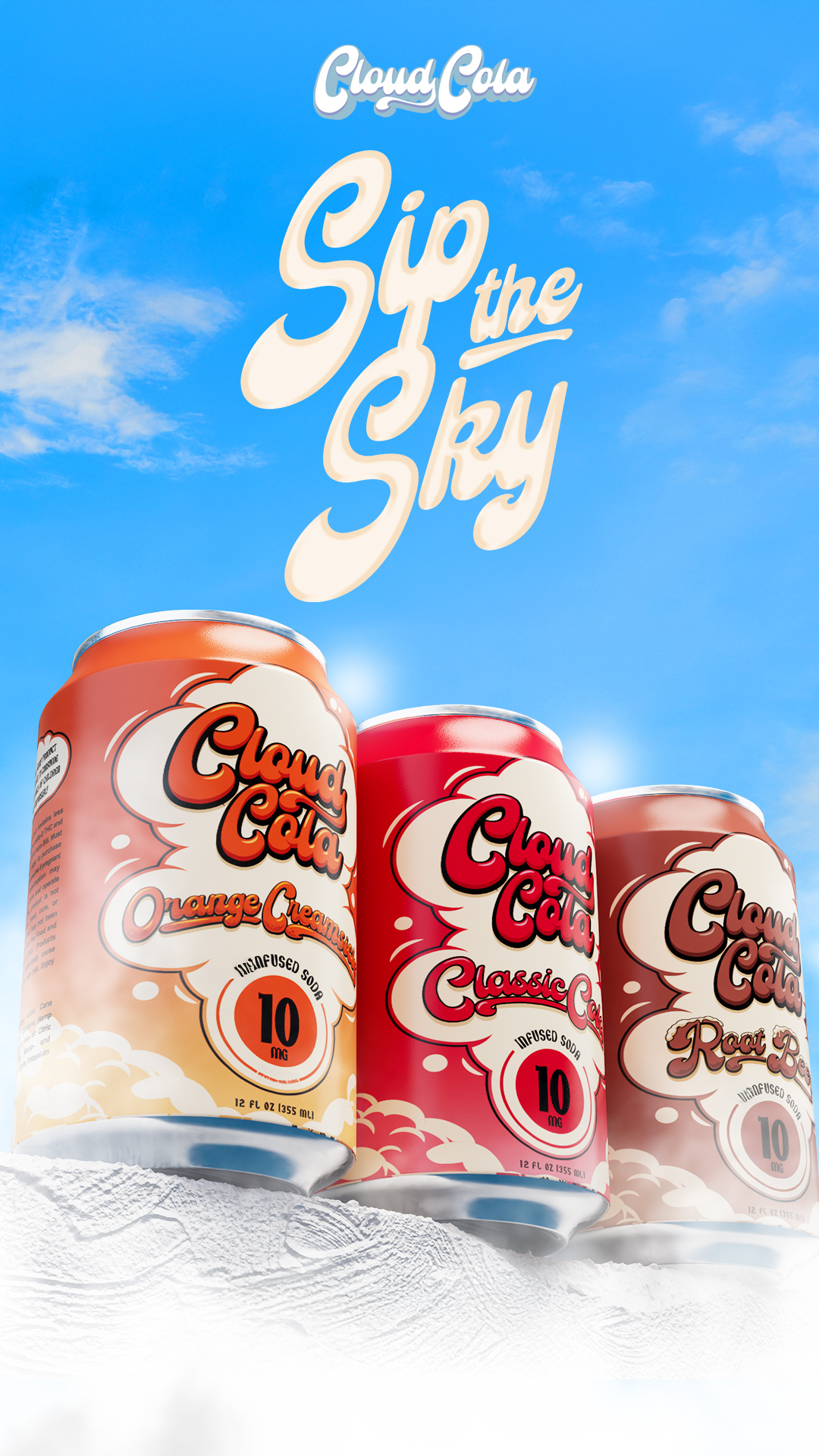Ingredient Sourcing
The journey from cannabis plant to refreshing THC soda begins with carefully selecting and sourcing high-quality ingredients.
THC Extraction
Ingredient sourcing is paramount in crafting a delicious and potent THC soda. Growers prioritize strains known for balanced cannabinoid profiles, specifically high THC content for desired psychoactive effects.
Beyond the cannabis itself, other essential ingredients include carbonated water, sweeteners like cane sugar or agave nectar, natural flavors (citrus, berries, etc.), and citric acid for tanginess.
Sourcing these ingredients ethically and sustainably is increasingly important to consumers. Many producers partner with local farms and suppliers, ensuring freshness, traceability, and supporting regional economies.
Carbonation Ingredients
When it comes to carbonation, the primary ingredient is simply carbon dioxide gas (CO2). This gas is dissolved into water under pressure, creating the characteristic fizz and effervescence of soda.
The method for infusing CO2 varies depending on the manufacturer’s equipment and process. Some use dedicated carbonation tanks, while others employ specialized bottling lines that inject CO2 directly into the beverage during filling.

Flavorings and Additives
Flavorings and additives play a crucial role in shaping the taste and sensory experience of THC soda. Natural flavors derived from fruits, herbs, or spices are commonly used to create refreshing and enticing profiles.
Some producers also incorporate essential oils for added complexity and aroma. Artificial flavorings may be used to replicate specific tastes or enhance existing ones, but natural options are often preferred for their authenticity and health benefits.
Additives like citric acid provide tartness, while other ingredients such as gum arabic or xanthan gum can improve texture and mouthfeel. Preservatives may be included to extend shelf life, although many producers focus on creating small-batch sodas with shorter expiration dates.
The Infusion Process
The heart of THC soda production lies in the infusion process, where cannabinoids are extracted from cannabis and seamlessly blended into a flavorful carbonated beverage.
Dissolving THC

This intricate process involves carefully selecting cannabis strains high in THC content.
These buds undergo extraction methods such as CO2 or solvent-based techniques to isolate the desired cannabinoids, leaving behind plant matter.
The extracted THC is then dissolved into a carrier oil, commonly MCT oil for its biocompatibility and rapid absorption.
Finally, this potent oil solution is infused into the prepared soda base, ensuring even distribution of THC throughout the beverage.
Precise temperature control and careful blending are essential during infusion to preserve cannabinoid potency and create a smooth, consistent final product.
Temperature Control
Temperature control is paramount during the infusion process.
THC and other cannabinoids are sensitive to heat, which can degrade their potency. Ideally, the temperature should be maintained within a specific range, often around room temperature or slightly cooler, to prevent degradation while allowing for proper dissolution of the THC oil into the soda base.
Overheating during infusion can lead to loss of cannabinoid activity, resulting in a less potent beverage. Conversely, excessively low temperatures may hinder the blending process and create an uneven distribution of THC.
Careful monitoring and adjustment of temperature throughout the infusion process ensure that the final product retains its desired potency and delivers the intended psychoactive effects.
Agitation and Mixing
Agitation and mixing are crucial steps in the THC infusion process.
Once the THC oil is added to the soda base, thorough agitation ensures even distribution of cannabinoids throughout the beverage. This can be achieved through various methods, such as gentle stirring, shaking, or using specialized mixers designed for incorporating oils into liquids.
Proper mixing prevents clumping or settling of the THC oil, guaranteeing a consistent dose in each serving.
Additionally, agitation helps to create a homogenous mixture, ensuring that the flavor and aroma are evenly dispersed throughout the soda.
Packaging and Distribution
Packaging and distribution are critical final stages in bringing THC-infused beverages to market. These processes must adhere to strict regulations concerning labeling, safety, and childproof packaging to ensure responsible consumption.
Sterile Filtration
To maintain product integrity and freshness, THC soda is typically packaged in airtight containers like bottles or cans. These containers are designed to protect the beverage from light, oxygen, and other environmental factors that can degrade cannabinoids and alter flavor profiles.
- Bottles often feature amber glass to minimize UV exposure, preserving potency and preventing degradation.
- Cans provide a lightweight and durable option, while aluminum helps to shield against light.
Sterile filtration is an essential step in ensuring the safety and quality of THC soda. After infusion, the beverage undergoes a filtration process that removes any residual plant matter, bacteria, or contaminants. This typically involves passing the soda through specialized filters with tiny pores that capture these particles, leaving behind a crystal-clear and safe-to-consume product.

Bottling Process
Once the THC is infused into the soda base, it’s time to bottle and distribute this refreshing concoction.
- The bottled or canned sodas are then labeled with crucial information, such as THC potency, ingredients, and dosage guidelines.
- Childproof caps are mandatory to prevent accidental ingestion.
Proper temperature control is essential throughout packaging and distribution to preserve cannabinoid potency and ensure the product arrives at consumers’ hands in optimal condition.
Labeling and Regulatory Compliance
Packaging and distribution are critical final stages in bringing THC-infused beverages to market. These processes must adhere to strict regulations concerning labeling, safety, and childproof packaging to ensure responsible consumption. To maintain product integrity and freshness, THC soda is typically packaged in airtight containers like bottles or cans. These containers are designed to protect the beverage from light, oxygen, and other environmental factors that can degrade cannabinoids and alter flavor profiles. Bottles often feature amber glass to minimize UV exposure, preserving potency and preventing degradation. Cans provide a lightweight and durable option, while aluminum helps to shield against light.
Sterile filtration is an essential step in ensuring the safety and quality of THC soda. After infusion, the beverage undergoes a filtration process that removes any residual plant matter, bacteria, or contaminants. This typically involves passing the soda through specialized filters with tiny pores that capture these particles, leaving behind a crystal-clear and safe-to-consume product.
Once the THC is infused into the soda base, it’s time to bottle and distribute this refreshing concoction. The bottled or canned sodas are then labeled with crucial information, such as THC potency, ingredients, and dosage guidelines. Childproof caps are mandatory to prevent accidental ingestion. Proper temperature control is essential throughout packaging and distribution to preserve cannabinoid potency and ensure the product arrives at consumers’ hands in optimal condition.
Cloud Cola’s THC drinks – your go-to cannabis beverage
- Why CBD Gummies Are A Great Choice For Pain-Free Living - November 9, 2025
- What Is The Best Filler For Over 65? - November 7, 2025
- What Are The Benefits Of CBD Gummies For Skin Health? - November 6, 2025
